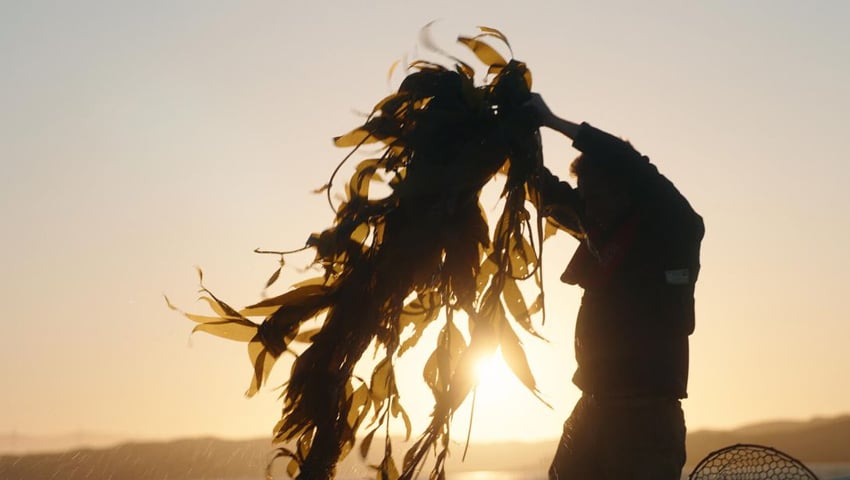Kelp Blue is a pioneering marine agriculture company, farming giant kelp for use in agriculture, pharmaceuticals and textiles.
Working in Alaska, New Zealand and Namibia, the company believes the benefits of growing giant kelp are environmental and social, as well as economic.
The ecological benefits include carbon sequestration and storage and biodiversity regeneration.
Valentin Pitiot, Kelp Blue’s Head of Projects, told 8point9, “Kelp has an ability to sequester vast amounts of carbon, forever. Kelp also benefits habitat provision: where you have kelp you usually have life. You can see these beautiful microcities working as an ecosystem engineer, providing habitats for marine biodiversity. Kelp also protects against coastal erosion, by reducing the wave energy by up to 60 per cent.”
Kelp is seeded on ropes anchored between the seabed and the surface, but Kelp Blue says that their approach is unusual. Instead of harvesting their kelp right down to the roots, they only take what’s floating on the surface of the water. The biomass around the rope anchors is left alone, aiding swift plant regeneration.
Once harvested, the crop is processed in a refinery for products such as Stim Blue, a natural booster for plants. The company is also exploring the development of sustainable products derived from seaweed, including bio-leathers, textiles, and various compounds like alginates and fucoidans, which have applications in the food, health and pharmaceutical sectors.
Stim Blue is the company’s flagship product. Where soils are damaged, it works to rapidly restore soil health and improve fertility. Pitiot said, “Our Stim Blue biostimulant offers farmers a strong return on investment by decreasing the need for synthetic fertilisers. Stim Blue boosts soil health and crop productivity and helps farmers shift to regenerative agriculture, without sacrificing yield – it enhances the soil structure and creates crop resilience.”
The strong ecological performance of kelp also provides an opportunity to establish nature-based income streams. Pitiot said, “Carbon credits are something we could tap into, but biodiversity credits are a huge one. So far we’ve seen more than 800 species in our kelp forests. When we started to have the seaweed, we saw the kelp lice coming to the kelp forest and eating everything. We were really scared, but instantly we started to see fish coming to eat the kelp lice, and then bigger fish coming to eat the smaller fish. Now the ecosystems are flourishing, which is great. In the future we hope to get access to biodiversity credits.”
Kelp Blue also prioritises social capital. Pitiot said, “In Namibia, over 90 per cent of the team is Namibian, including the managing director who is amazing. We try to hire locally as much as possible, but sometimes the skills are not available – when this is the case we train people. For example, we built a tidal pool to teach people how to swim, so that they can be the next generation of marine researchers and biodiversity monitors.”
Watch our full interview with Valentin Pitiot here
